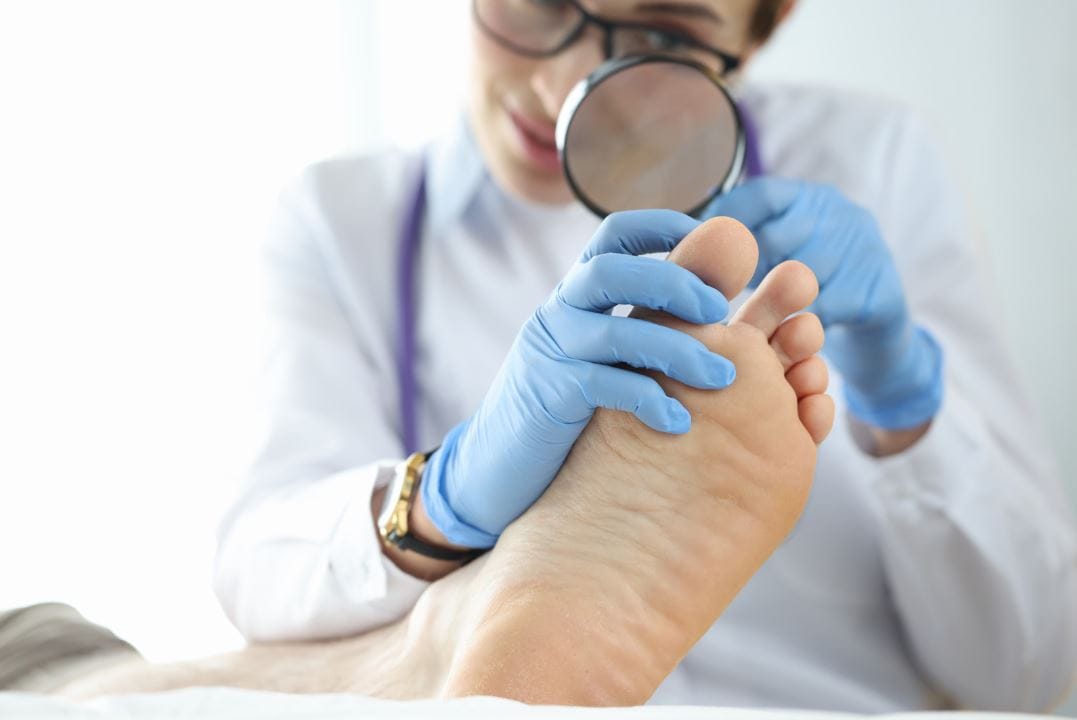What is Toenail Fungus?

Toenail fungus is a widespread issue that typically starts as a small white or yellow discoloration near the tip of the toenail. This condition arises when tiny fungi penetrate the nail through a minor injury, thriving in the warm and damp environment created by socks and shoes. Family Medicine Physician, Amber Lin MD, says, “the infection can lead to various symptoms, including the nail becoming swollen, yellow, thickened, brittle, or even detaching entirely”.
How did I get fungus?
Toenail fungus can be picked up in damp areas such as public gyms, shower stalls or swimming pools and can be passed among family members.
Risk factors include:
- Pre-existing skin conditions such as psoriasis
- Older age
- Tight shoes or stockings
- Injury of the skin or nail
- Having blood flow problems or diabetes
Other risk factors include abnormal PH level of the skin, not drying off the feet thoroughly after bathing or exercise and a compromised immune system.
Preventing toenail fungus
Proper hygiene and regular inspection of the feet and toes are the first lines of defense against fungal nails. Clean and dry feet resist disease.
- Wash and dry feet thoroughly
- Wear shower shoes in public areas when possible
- Wear shoes that fit well and are made of materials that breathe
- Wear socks made of synthetic fiber that keeps moisture away from your feet better than cotton or wool socks
- Change shoes or socks more than once daily
- Clip toenails straight across so that the nail does not extend beyond the tip of the toe
- Disinfect toenail clippers before use
When to Visit a Doctor
You’ll want to make an appointment with your primary care physician when you notice discoloration, thickening or deformity of your toenails. The earlier you seek professional treatment, the greater your chance at getting your nails to clear.
Visit PIHHealth.org to find a doctor or to make an appointment with your PCP.

Amber R. Lin MD
As an eight-year-old, Dr. Lin heard about people in Africa dying from easily treated diseases and decided to become a doctor to help. She chose to specialize in Family Medicine during her medical school OB/Gyn rotation when she discovered the joy and challenge of treating both babies and adults. “No two days are similar,” Dr. Lin explains. “As a Family Medicine practitioner, I can get to know an entire family as if they’re my own.” Dr. Lin has an interest in Tropical Medicine and Global Health. As the Program Director of the Family Medicine Residency Program in Whittier, California, she enjoys teaching the next generations of family medicine doctors for PIH Health and the community we serve. Dr. Lin travels to Africa in the Tropical Medicine rotation to provide residents with expertise and education in tropical medicine diseases. She also loves music, singing, and hip-hop dance when not practicing or teaching medicine.
View Dr. Lin's Profile